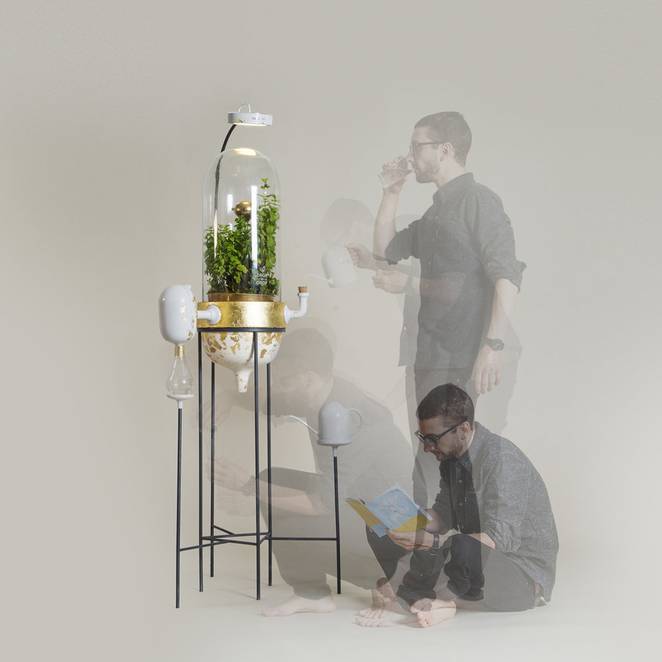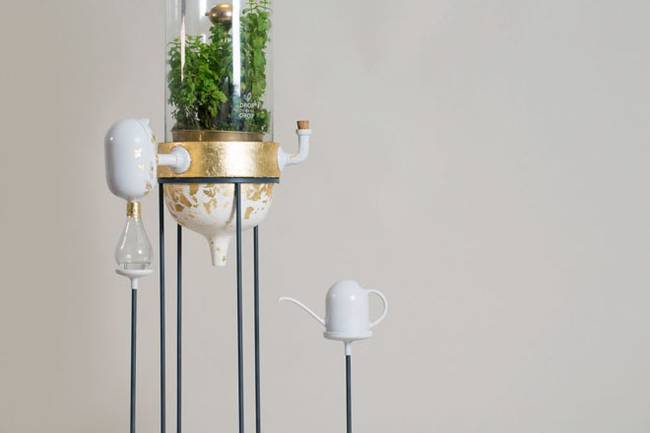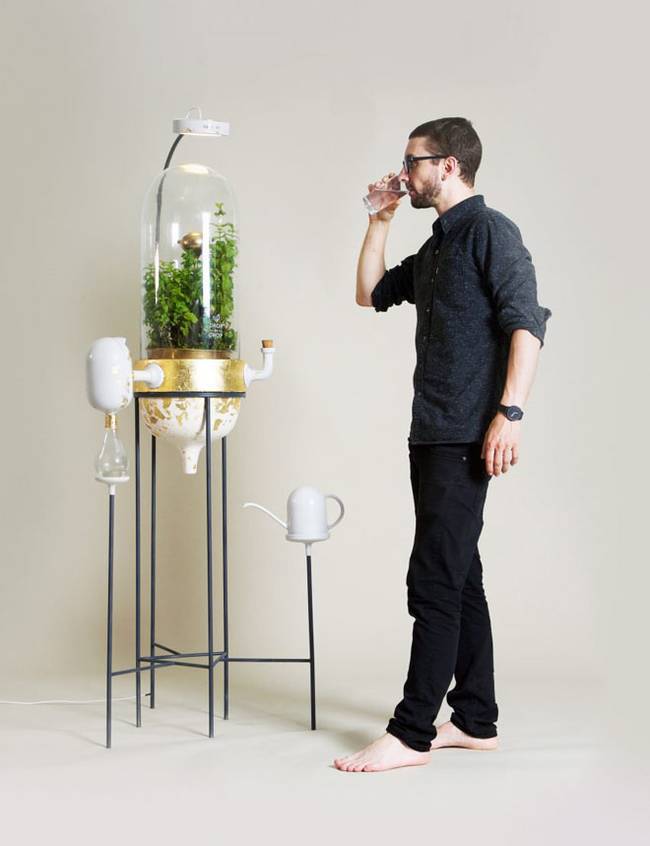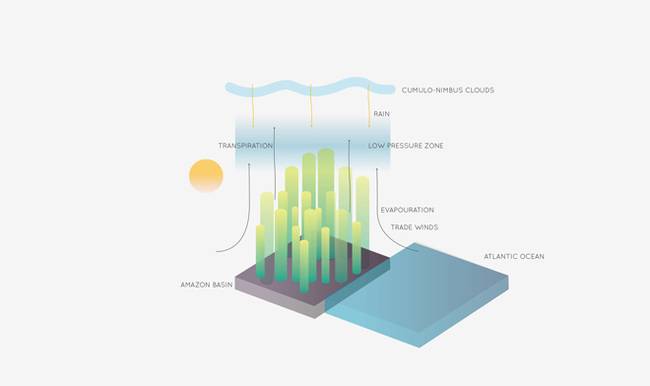Source: treehugger.com
Published: July 25, 2017

© Kikando
The lack of clean water has become a serious problem worldwide, thanks to industrial contamination, agricultural and urban pollution, and even from seemingly innocuous acts such as washing your synthetic fiber clothes. It’s hard not to contribute to the problem.
But might we find viable solutions by emulating processes found in nature? That’s what Royal College of Art design graduate Pratik Ghosh is aiming for his design for a home water purification system, which looks like a terrarium and is designed to filter and clean water like a “mini-Amazon rainforest.” See how it works:
Click here to watch “Drop by Drop”: https://vimeo.com/223953426
Called Drop By Drop, Ghosh’s enclosed design is like a mini-ecosystem, incorporating one square foot of plants, plus a pump-activated vacuum system that uses water pressure, transpiration, evaporation and condensation of water to produce about three-quarters of a cup of purified water a day. Says Ghosh:
‘The proof of concept is indeed a mini-version of the Amazon. It is a biosphere wherein the five key factors necessary for efficient transpiration, namely warmth, wind, light, pressure and humidity, are maintained at an optimum level.’

© Kikando
Less than a cup not very much, but as Ghosh tells Co.Design, he believes that the prototype could be scaled up to cover residential roofs, like those found in the United Kingdom, which measure about 800 square feet on average. By adding a system like that found in Drop By Drop, the roof installation could purify about 35 gallons of potable water within 12 hours of daylight.
Ghosh’s design is based on plants’ natural capacity to filter large amounts of water — a process known as phytoremediation, and which involves any particulates being filtered out by plants’ internal tissues and structures. As Co.Design points out:
‘Ghosh, who before getting his master’s degree at RCA worked in the life sciences division at General Electric, says that these xylems work just as well as the most advanced man-made nanofiltration systems. One 2014 study from MIT shows that about half a square inch of plant xylem from the sapwood of coniferous trees can effectively filter two-thirds of a gallon of water in a single day. Particles like heavy metals, nitrates, and other pollutants are too large to pass through the xylems, and so the water that passes through the plant is pure distilled water.’

© Kikando
There’s also a bit of cutting-edge science rolled in: Ghosh was also inspired by the biotic pump theory, a recent hypothesis about how massive water vapor condensation from forests may be a major driver on atmospheric pressure and wind movements. That’s may be why large rainforests like those found in the Amazonia may be responsible for moving many of the weather patterns around the globe.

© Kikando
But the bigger issue at stake is how we perceive water and our relationship with our environment, says Ghosh:
‘This is more than just a filtration system. It is a new lifestyle where the appliance is a living breathing entity which sits in the living room right next to your favourite couch. I believe that such a product can bring about a mass movement in the way we look at appliances and value systems. The concept can be scaled up using bigger plants and trees that need more water and can be grown in contained environments. Several other scales can be explored and implemented, thereby paving the way for research and design to delve into more sustainable solutions and solve some of the most burning problems of our times.’
So far, Ghosh has tested the system on London’s tap water, and water from Hyde Park’s lake. The water was tested afterward with a basic kit, and Ghosh found that the system filtered out nitrates, heavy metals, chlorine, and bacteria — though his next goal is to get the water tested in a more high-tech lab. Though it’s just a prototype for now, bio-inspired concepts such as Drop By Drop could be one effective way to tackle some of our most pressing environmental problems, whether it’s water, our food systems, or how we build our buildings.
